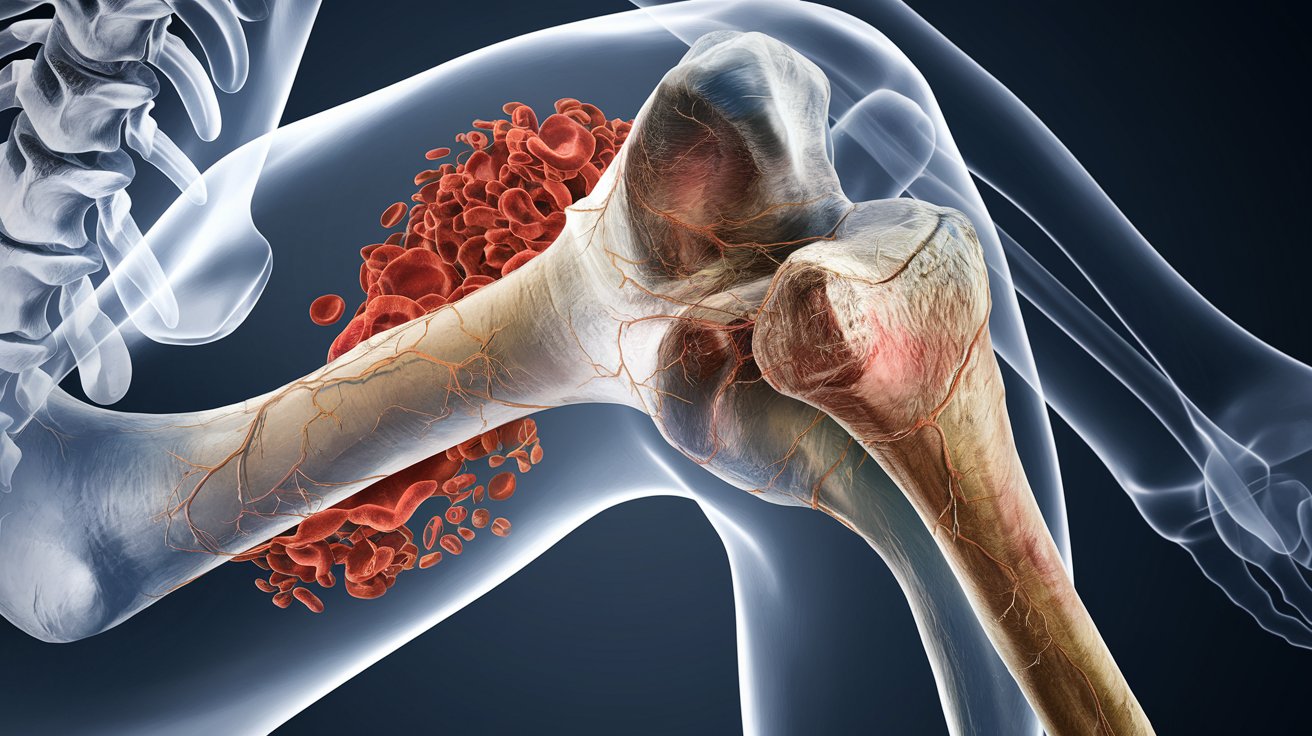
Osteosarcoma is a type of bone cancer that primarily affects the long bones in the body, such as the arms and legs. Limb anomalies often accompany this condition, leading to noticeable changes in the affected limb's structure and function. Another related condition is erythroid macrocytosis, which involves the presence of unusually large red blood cells. This can be a sign of underlying health issues, including bone marrow disorders. Understanding these conditions can help in early detection and treatment, improving outcomes for those affected. Here are 25 intriguing facts about these medical phenomena that will broaden your knowledge and awareness.
Key Takeaways:
- Osteosarcoma is the most common bone cancer in young people, causing pain and swelling. Early diagnosis and treatment are crucial for improving survival rates.
- Limb anomalies in osteosarcoma can affect mobility, but advances in surgery and prosthetics have improved outcomes for patients. Regular blood tests are important for monitoring erythroid macrocytosis in osteosarcoma patients.
Understanding Osteosarcoma
Osteosarcoma is a type of bone cancer that primarily affects the long bones in the body. It is most commonly found in teenagers and young adults. Here are some key facts about this serious condition.
- Osteosarcoma is the most common type of bone cancer in children and adolescents.
- It typically occurs in the bones around the knee, such as the femur and tibia.
- Symptoms often include pain and swelling in the affected area.
- The exact cause of osteosarcoma is unknown, but genetic factors may play a role.
- Treatment usually involves a combination of surgery and chemotherapy.
- Early diagnosis and treatment are crucial for improving survival rates.
Limb Anomalies in Osteosarcoma
Limb anomalies can be a significant concern for individuals with osteosarcoma. These anomalies can affect mobility and quality of life. Here are some important facts about limb anomalies related to osteosarcoma.
- Limb-sparing surgery is often performed to remove the tumor while preserving the limb.
- Amputation may be necessary if the tumor is too large or involves critical structures.
- Prosthetic limbs can help individuals regain mobility and function after amputation.
- Physical therapy is essential for rehabilitation and improving limb function.
- Limb anomalies can lead to differences in limb length, requiring additional treatments.
- Advances in surgical techniques have improved outcomes for patients with limb anomalies.
Erythroid Macrocytosis and Its Connection to Osteosarcoma
Erythroid macrocytosis is a condition characterized by enlarged red blood cells. It can be associated with various medical conditions, including osteosarcoma. Here are some key facts about erythroid macrocytosis and its connection to osteosarcoma.
- Erythroid macrocytosis can be a side effect of chemotherapy used to treat osteosarcoma.
- It may also be related to nutritional deficiencies, such as vitamin B12 or folate deficiency.
- Enlarged red blood cells can affect oxygen transport in the body.
- Regular blood tests are important for monitoring erythroid macrocytosis in osteosarcoma patients.
- Treatment for erythroid macrocytosis may involve addressing the underlying cause, such as nutritional supplementation.
- Managing erythroid macrocytosis can help improve overall health and well-being.
Genetic Factors in Osteosarcoma
Genetic factors play a significant role in the development of osteosarcoma. Understanding these factors can help in early detection and treatment. Here are some important facts about the genetic aspects of osteosarcoma.
- Certain genetic mutations are associated with an increased risk of developing osteosarcoma.
- Family history of bone cancer can be a risk factor for osteosarcoma.
- Genetic testing can help identify individuals at higher risk for osteosarcoma.
- Research is ongoing to identify specific genes involved in osteosarcoma development.
- Genetic counseling may be recommended for families with a history of osteosarcoma.
- Understanding genetic factors can lead to personalized treatment approaches for osteosarcoma patients.
Advances in Osteosarcoma Treatment
Treatment for osteosarcoma has evolved significantly over the years. Advances in medical technology and research have improved outcomes for patients. Here are some key facts about the latest developments in osteosarcoma treatment.
- Targeted therapies are being developed to specifically target cancer cells in osteosarcoma patients.
Final Thoughts on Osteosarcoma Limb Anomalies Erythroid Macrocytosis
Understanding osteosarcoma, limb anomalies, and erythroid macrocytosis can be a game-changer. These conditions, though complex, share connections that can help in diagnosis and treatment. Osteosarcoma, a type of bone cancer, often presents with limb anomalies. Recognizing these signs early can lead to better outcomes. Erythroid macrocytosis, characterized by enlarged red blood cells, sometimes appears in patients with bone disorders. Knowing this link can aid in comprehensive care. Staying informed about these conditions empowers patients and caregivers. It’s crucial to consult healthcare professionals for accurate diagnosis and treatment plans. Knowledge is power, and being aware of these facts can make a significant difference. Keep learning, stay vigilant, and always seek expert advice when dealing with health issues.
Frequently Asked Questions
Was this page helpful?
Our commitment to delivering trustworthy and engaging content is at the heart of what we do. Each fact on our site is contributed by real users like you, bringing a wealth of diverse insights and information. To ensure the highest standards of accuracy and reliability, our dedicated editors meticulously review each submission. This process guarantees that the facts we share are not only fascinating but also credible. Trust in our commitment to quality and authenticity as you explore and learn with us.
